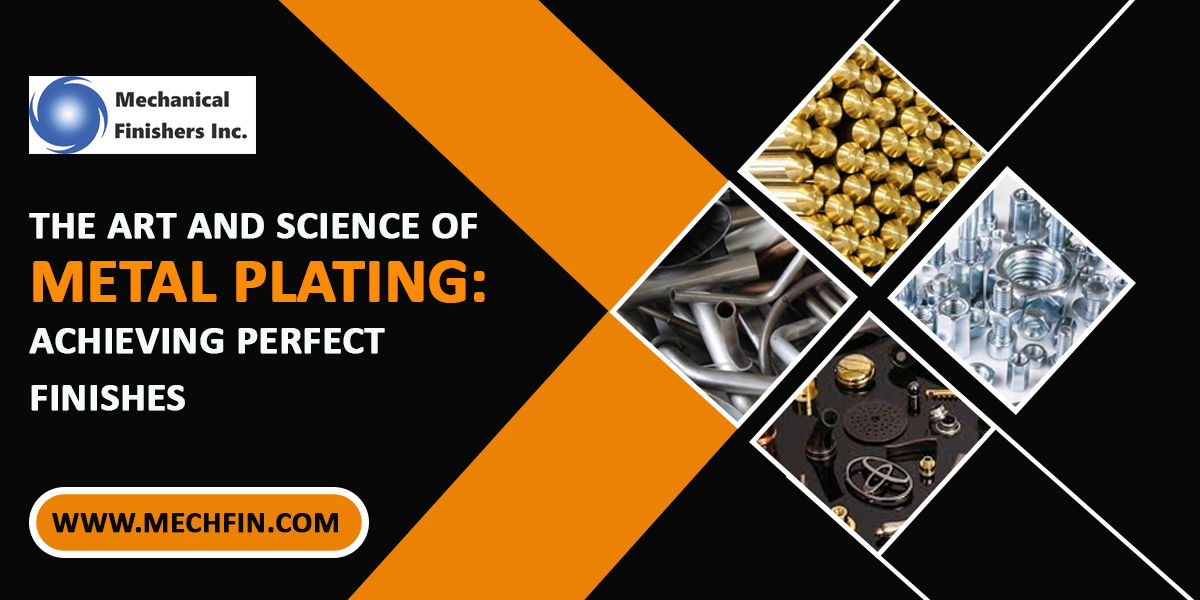The Art and Science of Metal Plating: Achieving Perfect Finishes
At Mechfin, we are passionate about metal plating. We have dedicated our careers to understanding the intricacies of this process and mastering the art and science of achieving perfect finishes. In this article, we will share our expertise on metal plating, discussing the techniques and technologies that we use to achieve superior results. Whether you are a manufacturer looking to improve the quality of your products, or an individual looking to restore a cherished antique, we hope that you will find this article informative and valuable.

What is Metal Plating?
Metal plating, also known as electroplating, is the process of applying a thin layer of metal onto a substrate, typically for decorative or functional purposes. The process involves immersing the substrate, or “work piece,” in a solution containing dissolved metal ions, and applying an electric current to the solution. The metal ions are attracted to the work piece and adhere to its surface, creating a thin coating of the desired metal. The thickness and properties of the coating can be controlled by adjusting the concentration of the metal ions, the current density, and other process parameters.
Common Metals Used in Metal Plating
At Mechfin, we work with a wide range of metals, each with its own unique properties and applications. Some of the most common metals used in metal plating include:
Nickel: A versatile and durable metal, commonly used for decorative and functional applications in the automotive, aerospace, and electronics industries.
Chrome: A hard and corrosion-resistant metal, often used for decorative applications in the automotive and consumer goods industries.
Gold: A precious metal valued for its beauty and conductivity, often used for high-end electronics and jewelry.
Copper: A versatile and affordable metal, used for electrical conductivity, heat dissipation, and decorative applications.
Zinc: A corrosion-resistant metal, often used as a protective coating for steel and other metals.
Techniques and Technologies Used in Metal Plating
At Mechfin, we use a range of techniques and technologies to achieve the perfect finish for every work piece. Some of the most important techniques and technologies we use include:
Pre-treatment: Before plating, the work piece must be thoroughly cleaned and prepared to ensure proper adhesion of the metal coating. This may involve degreasing, etching, and other chemical treatments.
Rack or Barrel Plating: Depending on the size and shape of the work piece, we may use either rack or barrel plating to apply the metal coating. Rack plating involves suspending the work piece on a rack, while barrel plating involves tumbling the work piece in a rotating barrel.
Multiple Layers: For some applications, we may apply multiple layers of different metals or coatings to achieve the desired properties or appearance.
Post-treatment: After plating, the work piece may undergo additional treatments such as polishing, buffing, or passivation to further enhance its appearance or properties.
Why Choose Mechfin for Metal Plating?
At www.mechfin.com, we take pride in our commitment to quality and customer satisfaction. We have years of experience in metal plating, and our team of experts is dedicated to providing the highest level of service and craftsmanship. Whether you need a single work piece plated or a large production run, we have the expertise and resources to meet your needs.
Conclusion
Metal plating is both an art and a science, requiring a deep understanding of the properties of metals, the intricacies of electro-chemistry, and the latest technologies and techniques. At Mechanical Finishers Inc, we are passionate about metal plating and dedicated to achieving perfect finishes for every work piece. We hope that this article has been informative and helpful, and we invite you to contact us for all your metal plating needs.
Original Source, https://bit.ly/42leg9D
Comments
Post a Comment